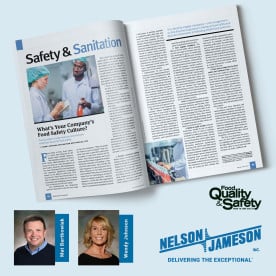Monthly Archives: February 2021
- February 24, 2021
Not only has COVID put a significant dent in our social lives, but it also has impacted many operations and practices throughout food processing facilities. Unfortunately, this
- February 19, 2021
Ten years...that’s a long time, right? But...not really. The more I see 10th, 20th, or 25th-anniversary releases of favorite albums or movies, the more I feel like time is slipping away...and ten years seems more like a blink. So, when you consider the dichotomy of the slow and all-too-quick hands of time, it’s impressive how much has been accomplished, and yet how far we have to go in food safety since the Food Safety Modernization Act was enacted in early 2011.
As much as it would be great to go with either a “yay” or “nay” as to whether it has been a success, like many pieces of major legislation, there have been both phenomenal strides as well as stagnation. As food safety is a complex undertaking, involving waves of domestic and global political and trade relations, budgetary concerns, etc., the quality assurance of the Act itself can be a challenge at times. As we’ll see though, overwhelmingly,
- February 01, 2021
Resources made available with Nelson-Jameson's Learning Center! This educational learning library was created to encourage our customers to seek out information, when applicable, to aid them in making informed purchasing decisions within the food, dairy, and beverage industries. By providing this free resource for anyone to use, our goal is to have you feel comfortable and confident in the products you purchase.
An intriguing aspect of our Learning Center is that the information we are providing is supplied to us by manufacturers, and industry associations. It is our goal to relay to you the most up-to-date information for your convenience. The information within this resource falls into several categories: Laboratory & QA/QC, Packaging & Ingredients,





